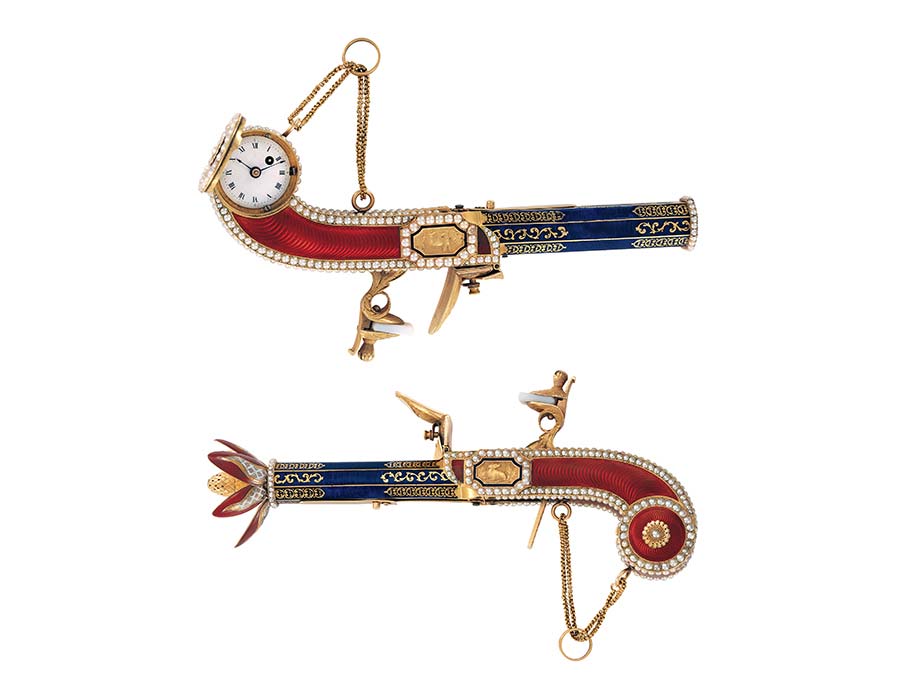Jewelers routes
06 April 2016
Share
Chinese watches at the Patek Philippe Museum in Geneva
Opened in November 2001, this museum exhibits the private collection of the Stern family (the current owner of Patek Philippe), and it’s one of the finest in the world. So, among more than 2,000 wonders, let’s look at the watches known as “Chinese”.
European horology’s links with China are not new. It may seem surprising but they date back to Louis IX, and went from strength to strength up until the mid-eighteenth century. Watches made in Geneva or London were at that time, particularly popular at the imperial court in Beijing. Called “Chinese”, they display the extraordinary expertise of European watchmakers, goldsmiths, enamellers and engravers like Piguet & Meylan, Bovet, William Anthony and James Cox. The dials are richly decorated, enameled and some are set with pearls, a symbol of happiness. Religious motifs like the Virgin or the halo have disappeared in favor of mythological scenes inspired by paintings of such artists as Vigee-Lebrun. They are integrated into flower-shaped cases and perfume bottles in gold, silver, diamond and moss agate. Some watches are even fitted with chimes or automatons.
Even more surprising is that most of these watches came in pairs. They were identical or even had reversed decorations. Why? It still remains a mystery for historians today. Some feel that it was simply an attraction to symmetry. Others believe that one may have replaced the other in the case of repairs. Given that at that time it may have taken months or even years for a watch to make the Geneva-Canton round trip, Canton being the only place in China where foreign goods could be imported. The watches were loaded onto sampans and transported down the Pearl River to Macao where they were then taken on board English and French ships. From the mid-nineteenth century onwards, with the Opium Wars, the sacking of the Summer Palace and then the Boxer Rebellion, the watches were eventually sold separately, lost, damaged or stolen. Today, the “Chinese” watches in the Patek Philippe Museum – more than twenty pairs and a dozen single pieces – feature among its rarest treasures.
More than a century later, they provide a rich echo to the contemporary models produced for Asian clients today.

















